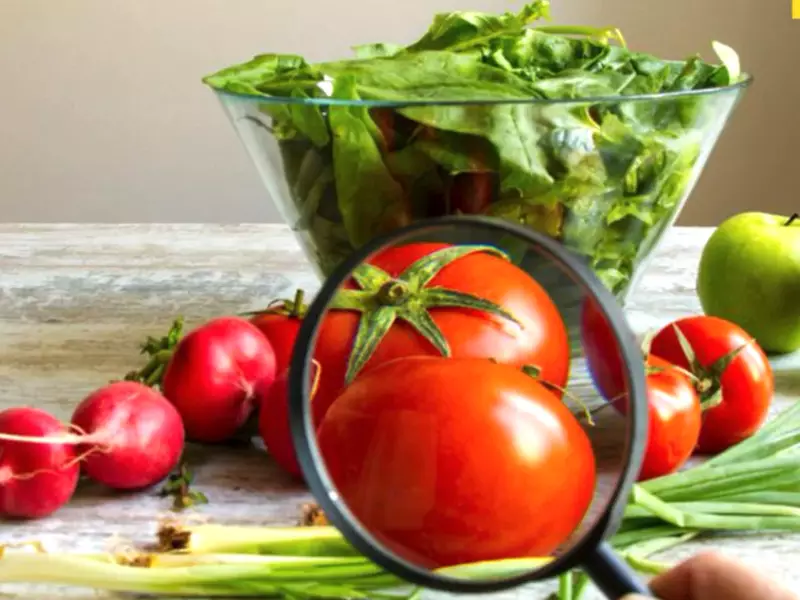Food safety is a critical concern for consumers, producers, and regulatory bodies worldwide. The integrity of what we consume is paramount to our health and well-being. However, the terms “adulteration” and “contamination” often surface in discussions about food safety, leading to confusion about their meanings, implications, and differences. Both pose significant health risks, yet their origins and the preventive measures against them differ vastly.
Adulteration involves the intentional addition of foreign substances to food products to increase quantity, alter appearance, or improve preservation, often at the expense of safety and nutrition. Contamination, on the other hand, refers to the unintentional presence of harmful substances or microorganisms in food, which can occur at any stage of production, processing, or distribution. Understanding the distinction between these two is crucial for identifying the appropriate responses and preventive strategies.
The relevance of distinguishing between adulteration and contamination cannot be overstated. Each has unique sources, detection methods, and health implications, making it essential for the food industry and consumers to recognize and mitigate these risks effectively. As global food supply chains become more complex, the challenge of ensuring food safety also intensifies, highlighting the importance of vigilance, regulation, and education in protecting public health.

Adulteration Defined
Definition and Overview
Adulteration in food refers to the deliberate addition of substances to food items to deceive consumers, reduce production costs, or alter the product’s nature intentionally. This malpractice compromises the purity, quality, and safety of food, potentially endangering consumer health.
Common Types and Examples
Adulteration manifests in various forms, each with unique motives and methods. Some common types include:
- Dilution: Adding water to thickeners like milk or juice to increase volume.
- Substitution: Replacing a valuable ingredient with a less expensive alternative, such as substituting olive oil with cheaper vegetable oils.
- Addition of non-food items: Incorporating non-edible substances, such as chalk in flour, to increase weight or volume.
- Chemical adulteration: Introducing hazardous chemicals, like formalin in milk or fish, to preserve freshness artificially.
Reasons Behind Food Adulteration
The primary motivator for food adulteration is economic gain. Other reasons include:
- Extending shelf life
- Enhancing appearance
- Mimicking higher-quality products
Contamination Explained
Definition and Overview
Contamination refers to the unintended presence of harmful substances or organisms in food. Unlike adulteration, contamination is usually not deliberate and can occur at any stage of the food supply chain.
Types of Contamination
Biological
Biological contamination involves pathogens such as bacteria, viruses, and parasites. Salmonella in poultry and E. coli in leafy greens are examples.
Chemical
Chemical contamination happens through pesticides, cleaning agents, or toxins leaching from packaging materials into food.
Physical
Physical contamination means foreign objects like glass, metal, or plastic pieces finding their way into food, posing choking or injury risks.
Common Sources and Examples
Contamination sources are varied, ranging from environmental pollution to improper handling. Examples include:
- Biological: Contaminated water or soil affecting crops
- Chemical: Pesticide residue on fruits and vegetables
- Physical: Packaging fragments entering food during processing
Key Differences
Basis of Distinction
The fundamental difference between adulteration and contamination lies in intent. Adulteration is intentional, aimed at deception for profit, while contamination is accidental, resulting from negligence or environmental factors.
Impact on Health
Both can pose serious health risks, but the immediate and long-term effects can vary. Adulteration often involves substances known to be harmful, while contamination’s impact depends on the contaminant’s nature and quantity.
Legal Implications
Laws strictly regulate both practices, but adulteration, due to its deliberate nature, typically incurs more severe penalties.
Health Risks
Short-term Effects
Immediate health risks can range from minor digestive disturbances to severe poisoning, depending on the adulterant or contaminant involved.
Long-term Consequences
Repeated exposure to adulterated or contaminated foods can lead to chronic health issues, including cancer, neurological disorders, and compromised immune function.
Vulnerable Populations
Children, the elderly, and individuals with pre-existing health conditions are particularly susceptible to the adverse effects of food adulteration and contamination.

Detection Methods
Techniques for Identifying Adulteration
Detecting adulteration requires a combination of simple tests that can be performed at home and sophisticated laboratory analyses. For instance, adding iodine to flour can reveal the presence of starch from potatoes or other sources, indicating adulteration. Similarly, the water test for honey, where pure honey remains intact when dropped into water, helps differentiate it from adulterated products that dissolve. On a more advanced level, chromatography and spectroscopy techniques enable scientists to detect chemical alterations and foreign substances in food with high precision.
Technologies for Detecting Contamination
For contamination, technologies range from microbial testing to detect pathogens to mass spectrometry for identifying chemical residues. DNA fingerprinting is also employed to trace biological contaminants back to their sources. Additionally, X-ray inspection systems are used widely in food processing to identify physical contaminants like metal fragments, stones, or glass pieces.
Role of Regulatory Bodies
Regulatory bodies, such as the Food and Drug Administration (FDA) in the United States and the European Food Safety Authority (EFSA) in Europe, play a pivotal role in establishing guidelines for food safety testing. They also conduct regular inspections and monitor compliance with food safety standards. These organizations not only enforce regulations but also provide resources for best practices in detection methodologies.
Prevention Strategies
Industry Best Practices
Food industry stakeholders implement various best practices to prevent adulteration and contamination. These include:
- Good Manufacturing Practices (GMPs): Ensuring cleanliness, proper sanitation, and preventive maintenance in food processing facilities.
- Hazard Analysis Critical Control Point (HACCP) systems: Identifying critical points where contamination could occur and establishing strict control measures.
- Traceability programs: Keeping detailed records to track food products through all stages of production, processing, and distribution.
Government Regulations and Standards
Governments enforce food safety standards and regulations to prevent adulteration and contamination. These standards specify acceptable levels of contaminants, outline permissible additives, and mandate labeling requirements. Regular updates and revisions to these regulations reflect the latest scientific findings and technological advancements in food safety.
Consumer Awareness and Education
Educating consumers about food safety is crucial. This includes teaching them how to:
- Recognize signs of adulteration and contamination.
- Understand food labels and certifications.
- Practice safe food handling and storage at home.
Public awareness campaigns and educational programs can empower consumers to make informed choices and demand higher standards from food producers.
Case Studies
Historical Incidents of Adulteration
One of the most infamous examples of adulteration occurred in the 19th century with the Swill Milk Scandal. Milk producers in New York City were found to be adding water, chalk, and other substances to milk to increase volume and mask dilution. This scandal led to public outrage and eventually, stricter food safety regulations.
Notable Contamination Outbreaks
The 2011 E. coli outbreak in Germany, traced to contaminated sprouts, is a recent example of a contamination crisis. It resulted in over 4,000 illnesses and 50 deaths. This incident highlighted the importance of stringent control measures in food production and handling.
Lessons Learned and Preventive Measures Implemented
Each food safety crisis has led to valuable lessons and the implementation of new measures to prevent future incidents. Post the Swill Milk Scandal, pasteurization became a standard practice to kill harmful microbes in milk. Following the E. coli outbreak, there was a heightened emphasis on the importance of farm-to-fork traceability and hygiene practices in the agriculture sector.
Frequently Asked Questions
What is food adulteration?
Food adulteration refers to the intentional addition of unauthorized substances to food products, which can decrease the product’s quality, endanger health, or be used to deceive consumers. This practice might involve adding water to milk, mixing inferior grains with superior varieties, or using non-food grade colors and preservatives, all aimed at increasing profitability or enhancing appearance deceptively.
How does food become contaminated?
Food can become contaminated through various means, including exposure to harmful bacteria, viruses, or parasites, chemical residues, or foreign objects. This contamination can occur at any point in the food production and supply chain, from farming and harvesting to processing, storage, and distribution. The sources of contamination are often environmental but can also result from human error or inadequate food handling practices.
How can consumers identify adulterated or contaminated food?
Identifying adulterated or contaminated food can be challenging for consumers, as changes are not always visible. However, some signs include off-odors, unusual colors, or textures and packaging that appears tampered with or damaged. For chemical contaminants and some forms of adulteration, laboratory testing is required to confirm the presence of harmful substances.
Why is distinguishing between adulteration and contamination important?
Distinguishing between adulteration and contamination is vital for addressing the specific health risks they pose and implementing the correct preventive measures. Adulteration often requires targeted regulatory actions and consumer awareness to combat intentional deception, while contamination control focuses on improving hygiene and safety practices throughout the food supply chain.
Conclusion
The difference between adulteration and contamination lies not only in their definitions but in their implications for food safety and public health. Recognizing and understanding these distinctions is crucial for developing effective strategies to combat these issues. As the global food system continues to grow in complexity, the roles of regulatory bodies, industry players, and consumers in ensuring the safety of our food supply have never been more important.
Efforts to educate the public about these risks, alongside rigorous enforcement of food safety regulations, are essential components of a comprehensive approach to safeguarding health. By staying informed and vigilant, consumers can also play a significant role in demanding and supporting safe food practices, ensuring that the food on our tables is not only delicious but, most importantly, safe to eat.
